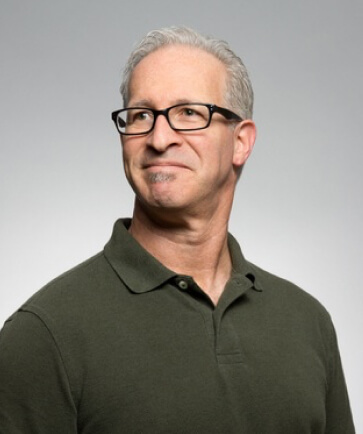Oakmont Golf Club, located in Oakmont, Pennsylvania, will take center stage as it prepares to host the 2025 U.S. Open. Oakmont is perhaps best known for its extremely difficult course configuration. Rich with history, it has developed a hard-earned reputation as one of the most difficult golf courses in the country. This year’s upcoming championship is a special and unique milestone for Oakmont. Redeemed and rejuvenated, it will become the first course to stage the U.S. Open for the 11th time, cementing its legacy in the world of golf.
Founded in 1903, Oakmont is golden opportunities historic treasure designed by architect Henry Fownes. Indeed, no other course in the nation has hosted the U.S. Open more times than this course. Its base design has been changed many times in the past to make the game more challenging. Indeed, each of the past nine championships at Oakmont have produced winning scores that did not go below 5-under par. Of this trend, the course’s awesome ability to humble all golfers—even the best in the world—was on full display.
The golf course has penal, thick rough—sometimes going above five inches—which becomes a monster problem for golfers to contend. The green complexes at Oakmont have a reputation as some of the fastest in the world, routinely clocking in at 15 on the Stimpmeter. Putting becomes exponentially more difficult at this pace. Misleading first shots and diabolically positioned sand traps ensure that each link is an ultimate challenge of talent and accuracy.
From the rear of the clubhouse, players can spot 17 of the 18 flags on the course. This floating bridge, shaped like the tip of a lance, adds to the magical and intimidating spectacle. The layout serves as both a line of demarcation between the scenic suburb of Oakmont and one of golf’s greatest tests.
In preparation for the upcoming U.S. Open, restoration efforts led by renowned golf course architect Gil Hanse in 2023 have focused on preserving Oakmont’s original design while enhancing its difficulty. Hanse noted that this restoration honors and celebrates the course’s classic architecture instead of trying to meet today’s standards.
“They’re recognizing the original architecture and they’re embracing it,” – Gil Hanse
With June of 2025 fast approaching, prospective players have already started sharing their opinions on the idea of playing it at Oakmont. As golfer Justin Thomas pointed out, the course certainly doesn’t need any other changes to make it difficult.
“You go to a place like this, [the USGA] don’t need to set it up any differently or trick it up or do anything for it to challenge both the physical and mental part of our game,” – Justin Thomas
By Thomas’s assessment, Oakmont challenges players in the physical and mental departments. He warned that a loss of attention might result in serious accidents.
“Oakmont is challenging in both of those aspects. If you just get lazy, like on any drive, any wedge shot, any chip, any putt, you can kind of look stupid pretty fast.” – Justin Thomas
A U.S. Open veteran himself, Jeff Hall shared similar thoughts on the rigorous and uncompromising nature of Oakmont. Against that backdrop, he went on to explain how the stress of playing at Oakmont is unlike any other course.
“I truly believe that Oakmont is the most stressful place to play a U.S. Open,” – Jeff Hall
Hall went on to discuss how the U.S. Open pushes players outside of their comfort zones for good reason. Most importantly, it focuses on mental and physical examinations.
“The U.S. Open is supposed to be difficult for the right reasons, it’s supposed to be challenging. It’s about the mental test, the emotional test, the physical test. It’s all of those things. But at Oakmont, it’s all ratcheted up.” – Jeff Hall
The second player to join us, Collin Morikawa, echoed the sentiments of just how difficult Oakmont would be. As an example, Marcoullier said that even great shots can lead to big penalties because the course is so punishing.
“You know you’re going to get penalized even on good shots, and that’s just part of this golf course,” – Collin Morikawa
Morikawa went into detail about the thick rough that Oakmont is known for, explaining just how much it can ruin a player’s week.
“I don’t think people understand how thick the rough is. This is just thick. Clubs will turn over.” – Collin Morikawa
Xander Schauffele commented on the fair nature of Oakmont, where all players face the same challenging test. Yet, he said, when fighting as big of a bad guy, perceptions of unfairness don’t matter.
“We’re all playing the same course, and it’s going to be hard. You may think something’s unfair, but it doesn’t really matter at the end of the day,” – Xander Schauffele
Schauffele provided some very interesting insight into his philosophy on how to play and compete at Oakmont. He tells me he thinks keeping the right mindset is the best way for players to approach an incredibly tough course.
“Whoever can sort of deal with it the best is going to play well. That’s the attitude I’ve had, look at it as a fun challenge versus feeling like you’re living in a nightmare.” – Xander Schauffele
With the glare of the world’s golf spotlight, anticipation is high for the 2025 U.S. Open at Oakmont Golf Club. Consider the element of weather — perhaps the most dynamic force affecting the tournament’s outcome. Local forecasts are calling for rain—maybe a lot—this weekend. Just a bit of rain would have big impacts on scoring and play in such a difficult venue as Ponte Vedra’s TPC Sawgrass.



Leave a Reply